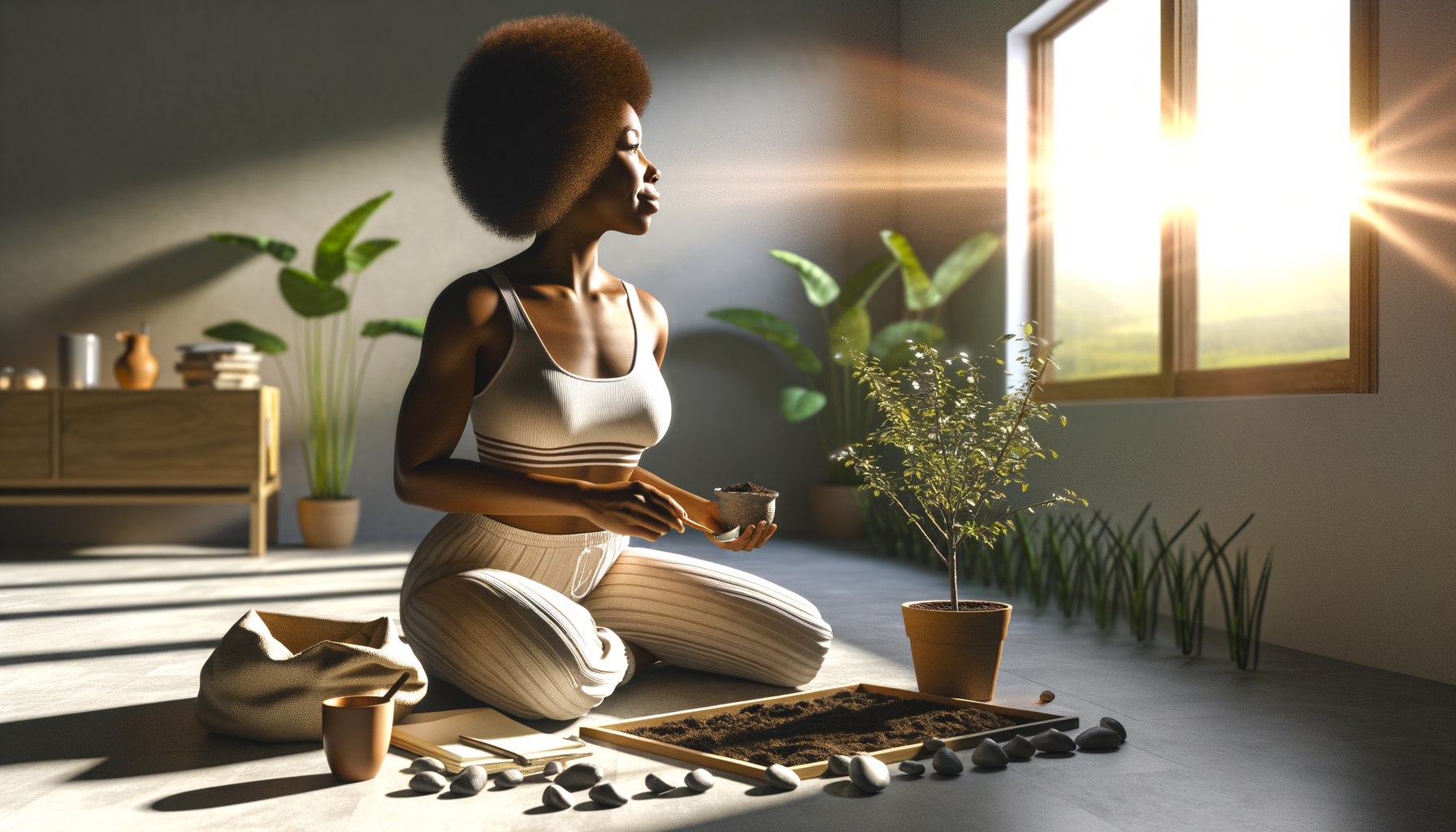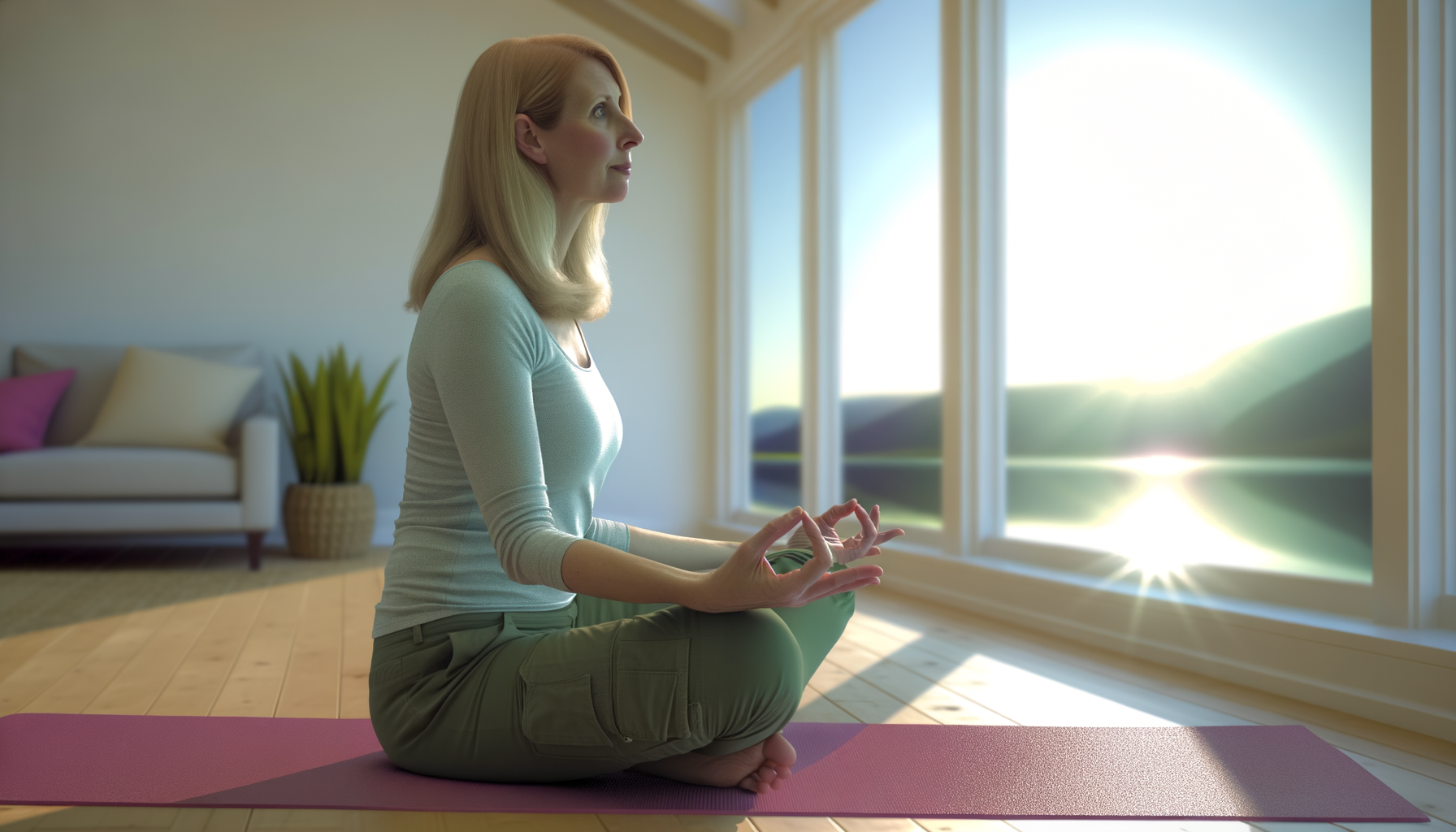
Introduction to the Higher Self
Understanding the Concept of the Higher Self
The notion of the Higher Self is a transcendent concept that varies across cultures and religions, yet it fundamentally represents the part of our being that extends beyond our physical existence. It is a consciousness deeply connected to the universe, capable of elevating our vibrations and enriching our life experience. The Higher Self is not merely an abstract idea; it is an attainable state of being that we can embody in our daily lives, guiding us towards spiritual growth and enlightenment.
The Importance of Self-Discovery in a Chaotic World
In today’s fast-paced and often tumultuous world, the journey of self-discovery becomes paramount. Amidst the chaos, connecting with our Higher Self serves as an anchor, providing clarity and purpose. It is through this profound connection that we can navigate life’s complexities with greater ease, finding solace and direction in the wisdom that transcends our immediate sensory experiences.
The Journey to Self-Actualization
Self-actualization is the process of realizing and fulfilling one’s potential, and it is intimately linked with the discovery of the Higher Self. This journey is not a destination but a continuous path of growth, learning, and self-improvement. It involves introspection, mindfulness, and a commitment to personal development. As we align more closely with our Higher Self, we unlock our innate abilities to manifest our true desires and live authentically.
Challenges to Finding the Higher Self
Despite its transformative potential, the path to the Higher Self is fraught with challenges. The noise of daily life, societal expectations, and our own limiting beliefs can obscure the voice of our innermost self. It requires dedication and perseverance to overcome these obstacles, and often, a leap of faith into the unknown realms of our spirituality. Yet, the rewards of such a journey are immeasurable, leading to a life lived with greater intention, harmony, and fulfillment.
The Role of Mindfulness and Meditation
Mindfulness as a Path to Inner Peace
In the cacophony of our daily lives, mindfulness stands as a beacon of tranquility, offering a path to inner peace. This practice involves maintaining a moment-by-moment awareness of our thoughts, feelings, bodily sensations, and the surrounding environment with openness and non-judgment. By focusing on the present, mindfulness allows us to observe our thoughts and feelings without getting caught up in them. This can lead to a profound sense of calm and a deeper connection with oneself, acting as an antidote to the chaos of the external world.
Different Meditation Techniques for Self-Exploration
Meditation, a cornerstone of mindfulness, comes in various forms, each offering unique benefits for self-exploration. Techniques such as the Body Scan encourage us to tune into bodily sensations and foster a mindful connection with our physical selves. Breath-focused meditation helps center our thoughts and brings clarity, while loving-kindness meditation opens our hearts to compassion for ourselves and others. Exploring different techniques allows us to find the practice that resonates most deeply with our personal journey towards the higher self.
Integrating Mindfulness into Daily Life
Integrating mindfulness into daily life can transform routine actions into moments of deep presence and awareness. Simple practices like mindful eating, walking, or even engaging in household chores can become opportunities for mindfulness. The key is to engage fully with the present moment and the task at hand, whether it’s feeling the texture of the food we eat or noticing the sensation of our feet touching the ground as we walk. This integration helps us cultivate a continuous state of mindfulness, blurring the lines between formal meditation and the rest of our lives.
Overcoming Common Meditation Challenges
While meditation is beneficial, it’s not without its challenges. Common obstacles include distraction, impatience, and sometimes even physical discomfort. To overcome these, it’s important to approach meditation with a sense of kindness towards oneself. When distractions arise, gently acknowledge them and return to the focus of your meditation, be it the breath or a mantra. Patience is cultivated by understanding that the benefits of meditation often come with time and consistent practice. For physical discomfort, ensure you’re in a comfortable position and make adjustments as needed, remembering that the goal is to be both alert and relaxed.
Harnessing the Power of Positivity and Manifestation
Understanding the Law of Attraction
The Law of Attraction is a universal principle suggesting that positive thoughts bring positive results into a person’s life, while negative thoughts bring negative outcomes. It is the belief that the universe creates and provides for you that which your thoughts are focused on. It is often described as a magnetic power emitted through one’s thoughts, which draws whatever is being focused on into one’s life. Embracing this law means aligning your thoughts and emotions with the outcomes you wish to manifest.
Cultivating Positive Thoughts and Emotions
Our thoughts and emotions are powerful catalysts for change. Cultivating a positive mindset is essential in creating a life that reflects one’s aspirations and desires. To think positively, one must focus on gratitude, optimism, and a belief in one’s own abilities. This can be achieved through practices such as affirmations, visualization, and gratitude journaling. By maintaining a positive emotional state, we raise our vibrational frequency, which in turn attracts experiences that resonate with that frequency.
Practical Tips for Manifesting Your Desires
- Set Clear Intentions: Be specific about what you want to manifest. Clarity is key.
- Visualize: Spend time each day picturing your life as if you’ve already achieved your desires.
- Take Action: Manifestation is not just about thinking; it’s about making tangible steps towards your goals.
- Believe: Have faith that what you are asking for is on its way to you.
- Receive: Be open and ready to receive what the universe sends your way, even if it arrives in unexpected forms.
The Balance Between Acceptance and Desire
Finding the balance between acceptance and desire is crucial in the manifestation process. While it’s important to have desires and to work towards them, it is equally important to be at peace with the present moment and to accept things as they are. This balance prevents the negative emotions of impatience and dissatisfaction, which can lower your vibrational frequency and hinder the manifestation process. Acceptance does not mean giving up on your desires, but rather embracing a state of contentment while you work towards your goals.
In conclusion, harnessing the power of positivity and manifestation involves understanding and applying the Law of Attraction, cultivating a positive mindset, taking practical steps towards your desires, and maintaining a balance between acceptance and the pursuit of your goals. By doing so, you can elevate your existence and find your higher self amidst the chaos of the world.
Cultivating Healthy Relationships
The Impact of Relationships on Personal Growth
Relationships are the bedrock of our social existence and play a pivotal role in shaping our personal growth. The people we surround ourselves with can either propel us forward or hold us back. Healthy relationships provide support, challenge us to be our best selves, and offer a mirror through which we can see ourselves more clearly. Conversely, toxic relationships can drain our energy, stifle our growth, and lead to a negative self-image. It is through the give-and-take of relationships that we learn about trust, compromise, and the importance of setting boundaries.
Setting Boundaries for Healthier Connections
Boundaries are essential in maintaining healthy relationships. They help define where we end and others begin, allowing us to preserve our individuality and sense of self. Setting boundaries involves communicating our needs and limits to others and is a sign of self-respect. It requires the courage to say no, the wisdom to accept our limitations, and the strength to advocate for our well-being. When boundaries are clear and respected, relationships can flourish without the risk of overstepping or neglect.
The Art of Compassionate Communication
Effective communication is the cornerstone of any healthy relationship. Compassionate communication, or nonviolent communication, is a method that fosters understanding and empathy. It involves actively listening to others, expressing our thoughts and feelings without blame or judgment, and acknowledging the emotions of all parties involved. By practicing compassionate communication, we can resolve conflicts more peacefully, deepen our connections, and create an environment where everyone feels heard and valued.
Nurturing Relationships While Pursuing Personal Development
Personal development and relationship building are not mutually exclusive. In fact, they can be synergistic if approached correctly. Nurturing relationships while pursuing personal growth involves finding a balance between self-care and caring for others. It means being present for loved ones while also carving out time for self-reflection and self-improvement. By encouraging and supporting each other’s growth, we can build relationships that are both fulfilling and conducive to our individual journeys toward self-actualization.
Embracing a Holistic Approach to Well-being
The Interconnection of Mind, Body, and Spirit
The quest for well-being is an intricate dance of harmonizing the mind, body, and spirit. This triad forms the core of our existence, each aspect influencing the others in profound ways. The mind’s thoughts and emotions can manifest as physical symptoms in the body, while the body’s health can deeply affect mental clarity and emotional stability. The spirit, often the most elusive component, encompasses our sense of purpose, connection, and inner peace. It is the silent conductor orchestrating the symphony of our holistic health. Recognizing this interconnection is the first step towards elevating our existence and navigating the complexities of a chaotic world.
Physical Health as a Foundation for Spiritual Growth
Our physical health serves as the bedrock upon which our spiritual journey is built. A body that is nourished, rested, and active is better equipped to engage in introspection and spiritual practices. Exercise, for instance, is not merely a tool for physical fitness but can be a moving meditation, a way to ground oneself in the present moment. Similarly, the food we consume can affect our vibrational energy, influencing our capacity for spiritual openness. By honoring our bodies as temples, we create a conducive environment for spiritual growth and the pursuit of our higher selves.
Emotional Intelligence and Its Role in Self-Discovery
Emotional intelligence is the ability to understand and manage our emotions, as well as empathize with the emotions of others. It plays a pivotal role in self-discovery, acting as a compass guiding us through the internal landscape of our feelings and reactions. By developing emotional intelligence, we gain insight into our deepest fears, joys, and desires, allowing us to navigate life’s challenges with greater resilience and to connect more authentically with others. This self-awareness is a critical component of finding our higher self amidst the noise of the external world.
Incorporating Holistic Practices into Your Routine
To truly embrace a holistic approach to well-being, we must integrate practices that nurture all aspects of our being into our daily routines. This could include:
- Meditation and Mindfulness: Setting aside time for stillness and presence each day.
- Yoga or Tai Chi: Engaging in physical activities that also calm the mind and invite spiritual reflection.
- Nutrition: Choosing foods that not only fuel the body but also support mental and emotional health.
- Connection: Fostering relationships and community involvement that feed the soul.
- Nature: Spending time outdoors to rejuvenate the spirit and remind us of our place in the larger web of life.
- Continuous Learning: Seeking knowledge and experiences that challenge and expand our understanding of ourselves and the world.
By weaving these threads into the fabric of our lives, we create a tapestry of holistic well-being that supports our journey towards the higher self.
Overcoming Obstacles on the Path to the Higher Self
Identifying and Overcoming Limiting Beliefs
Our journey towards the higher self is often hindered by deeply ingrained limiting beliefs. These are the negative assumptions we hold about ourselves, others, and the world, which can stifle our growth and potential. To transcend these barriers, we must first identify them through introspection and mindfulness. Once recognized, we can challenge these beliefs by questioning their validity and reframing our thoughts to align with a more empowering and positive perspective. Techniques such as affirmations, cognitive restructuring, and visualization can aid in this transformative process.
Dealing with External Pressures and Distractions
In a chaotic world, external pressures and distractions can easily derail us from our spiritual path. To maintain focus, it’s essential to establish clear priorities and boundaries that protect our time and energy. This might involve saying no to unnecessary commitments, limiting exposure to negative media, and creating a serene environment that supports our spiritual practices. Mindfulness techniques can also help us remain centered and present, reducing the impact of external chaos.
The Importance of Perseverance and Patience
Embarking on the path to the higher self is a marathon, not a sprint. It requires perseverance in the face of setbacks and patience with our progress. Recognizing that personal growth is a non-linear process allows us to be gentle with ourselves and honor the journey. It’s crucial to celebrate small victories and learn from challenges, as each step brings us closer to our higher self. Consistent practice and commitment to our spiritual goals will yield transformative results over time.
Seeking Support and Community on Your Journey
No one is an island, and on the path to self-discovery, a supportive community can be invaluable. Seeking out like-minded individuals, whether through spiritual groups, online forums, or workshops, can provide encouragement, inspiration, and shared wisdom. Engaging with a community allows for the exchange of ideas, experiences, and practices that can enhance our own journey. Additionally, mentors or spiritual guides can offer personalized guidance and support, helping us navigate the complexities of personal growth.
In conclusion, overcoming obstacles on the path to the higher self is an integral part of the spiritual journey. By identifying and overcoming limiting beliefs, dealing with external pressures, cultivating perseverance and patience, and seeking support, we can rise above the challenges and continue to evolve towards our truest and most enlightened selves.
Conclusion: Integrating Insights into Everyday Life
Creating a Personalized Roadmap for Growth
To integrate the insights gained from your journey to the higher self, it’s essential to create a personalized roadmap for growth. This plan should reflect your unique values, strengths, and areas for development. Start by setting clear, achievable goals that align with your higher self’s aspirations. Break these goals down into smaller, actionable steps and set timelines to track your progress. Remember, this roadmap is not set in stone; it should be flexible enough to adapt to life’s inevitable changes and lessons learned along the way.
Maintaining Commitment to Your Higher Self
Maintaining commitment to your higher self requires consistent effort and self-reflection. Regularly revisit your intentions and assess whether your actions align with your goals. Cultivate habits that nurture your well-being, such as meditation, journaling, or spending time in nature. Surround yourself with supportive individuals who encourage your growth and hold you accountable. Most importantly, practice self-compassion and patience, understanding that personal development is a continuous journey.
The Continuous Process of Self-Improvement
Self-improvement is an ongoing process that involves embracing both successes and setbacks as opportunities for growth. Stay curious and open to new experiences that challenge you and expand your perspective. Invest in lifelong learning, whether through formal education, reading, or engaging in meaningful conversations. Reflect on your experiences, extract lessons, and apply them to future endeavors. By viewing self-improvement as a lifelong adventure, you’ll cultivate a growth mindset that values progress over perfection.
Encouragement for the Ongoing Journey
As you continue on your path to the higher self, it’s important to find sources of encouragement to sustain your motivation. Celebrate your achievements, no matter how small, and use them as fuel to keep moving forward. Seek inspiration from mentors, literature, or any resource that resonates with your spirit. Remember that the journey to the higher self is as rewarding as the destination itself. Embrace each moment with gratitude and recognize that every step brings you closer to the person you aspire to be.








